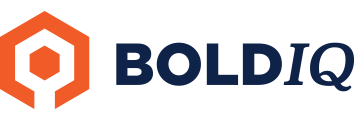A look ahead to 2018 with Tech Target

With 2018 right around the corner, everyone from industry experts to company CEOs is looking ahead to the trends the new year will bring. For those situated in our evolving smart cities, the growth of the on-demand economy to the increasing interconnectivity of IoT devices will be especially interesting over the next 12 months. After all, this year saw the advent of drone delivery with Amazon’s early tests and later examples from competitors of deliveries, ranging from the trivial, such as Domino’s pizza delivery, to life-saving medical supply deliveries in Tanzania. Additionally, the self-driving car race heated up, with nearly every auto manufacturer announcing new and improved models up to and including the Tesla driverless truck. Finally, convenience-based services reigned supreme, all thanks to the on-demand economy.
When we take a look back, technology made a big impact on our lives in 2017; so that now begs the question: What trends will 2018 hold? Let’s take a look.
Delivery drones and sidewalk bots may be heading to our front doors sooner than we think. With regulation discussions by the FAA and White House heating up, it is clear the goal of building smarter cities is a priority in 2018. This includes the testing, implementation and adoption of smarter, more efficient delivery methods of products and goods. Over the next year, we can expect to see more companies — across a surprising number of industries — testing sidewalk bots in metro cities, which are more heavily populated and present different challenges and risks, while drones will reign king in rural areas where there are less distractions and obstacles to make deliveries.
On-demand services, including anything from ride-sharing to food delivery to laundry services, are the backbone of the gig economy and have quickly become a necessity for our society. However, it’s commonly overlooked that most companies in this industry dip into the same pool of resources. Think about it: How many times has a ride-share car pulled up and the corner of its window has stickers of all major players in the market?
With new companies entering the market each day, we will soon reach a significant imbalance of overall resources and consumer demand. And if this imbalance continues to grow at the rate it’s currently growing, the gig economy bubble will eventually burst. The solution? Twofold:
- Consolidate to counterbalance supply with demand. In 2018, we’ll begin to see companies merge within their respective markets to use resources more efficiently and gain the most market share, while others will subsequently become obsolete.
- Control your resources. In the year ahead, we will start to see companies use controlled resources, i.e., resources that they will be able to schedule for work and direct quality and service for. Resources will return to become a service company’s competitive advantage.
Overall, we can expect to see the full implementation and maturation of technology introduced in 2017 over the next year. Self-driving cars, checkout-less grocery stores, and drone and bot deliveries will become much more commonplace and an accepted part of our society. However, one big question lingers: Will industries and companies ensure the technology is efficient and optimized for the benefit of both consumers and society? The answer: We’ll have to wait and see.



